We Cover the Waterfront:
conversations with VA alumnx, faculty and guests
Alumnx Profile: Damali Abrams (S 08)
Damali Abrams the Glitter Priestess is a New York City based artist, Reiki practitioner, and educator. Damali attended the Whitney Independent Study Program and earned her MFA from Vermont College of Fine Arts and her BA from New York University.
Damali is a current Creative-In-Residence at Brooklyn Public Library. She is a recipient of the Queens Council on the Arts New Works Grant. She has been a fellow at Culture Push, the Robert Blackburn Printmaking Workshop, A.I.R. Gallery, and apexart in Seoul, South Korea. Damali has also been an Artist-in-Residence at Fresh Milk in Barbados, Groundation Grenada, The Center for Book Arts, Jamaica Center for Arts & Learning (JCAL), and LMCC on Governors Island.
Damali has presented her work at School of Visual Art (SVA), Sonoma State University, Soho House, UConn Stamford, Borough of Manhattan Community College (BMCC), Barbados Community College, New York University (NYU), SUNY Purchase, Hunter College School of Social Work, and Syracuse University’s 601 Tully.
Damali’s work has been exhibited at many spaces including El Museo del Barrio, MoCADA (Museum of Contemporary African Diasporan Art), Rush Arts Gallery, Longwood Gallery, The Schomburg Center for Research in Black Culture, JCAL, and The Point. Her writing has appeared on the blogs of art21, Fresh Milk, and Groundation Grenada. Most recently her work was published in Jam Journal.
How has the pandemic affected your experience as a 2020 Creative in Residence at the Brooklyn Public Library?
The theme of the residency was “failure” and we were asked to talk about a project we wanted to work on where failure played a role.
Early on we were having in person meetings, but after the quarantine and lock down, we started to have meetings regularly online, which wasn’t supposed to be part of the residency.
Those online meetings for the first few months of the lock-down were nice because everyone was isolated or just with whoever they lived with. At that time there was really nowhere to go so it was great to come together weekly and discuss everything, the world, life, our projects.
My project idea is something called the Damali Center for Art and Health. The name changes a lot. Sometimes I call it the Glitter Priestess Center for Art and Health or the Glitter Priestess Center for Art and Healing. The concept is a space where people can go and make art or meet with different kinds of healing practitioners. I want to have an open space where people can just feel safe to do either one of those things. We would have aromatherapy, different kinds of herbal teas, art supplies, and people teaching art classes, or workshops.
So, in terms of the concept of “failure”, I’ve been applying for residencies, trying to get temporary spaces to create the Center and it has been a failure so far because I don’t have any way to do it. These applications predate the pandemic as this is something I have been trying to get going for a while.
Can you talk about your interventions in healing arts?
I have just been feeling an increasing sense of urgency around health and healing just by looking at the people I know around me. Since the last election, and the year leading up to that last election, I feel like everyone is just so anxious. There was this building and building up of anxiety, and then we got the president we got and look where we wound up! So those anxieties were clearly well founded because things have just completely deteriorated to the point where we can’t even leave the house without masks now.
I have just really been wanting to foreground health. In one part of my work to be focusing on health, in another part of my work really focusing on freeing our imaginations, because that’s connected to our health as well. In terms of illness, black women have the highest rates of stress related illness such as hypertension, heart disease, diabetes etc. And as I am having different kinds of health concerns myself, and people I know are, I am thinking about ways that we can take our health into our own hands. That’s something I have been doing in my own work for a long time now, but increasing it more and more as there seems to be more of a sense of urgency.
Whenever I learn things, or I find something that has been helpful to me, like building my immune system, or helping me with anxiety or stress, whatever it is, I always want to share it with other people. I always find ways to do that. In 2003 I took a course on herbal medicine and have incorporated those ideas into the work more and more.
What prompted the creation of your Reiki videos?
I am a Reiki practitioner and I usually would meet with clients in person, then because of the pandemic, I couldn’t. The Reiki practitioner channels a universal life force energy through our hands typically, and usually in an in-person session. I would touch different parts of a person’s body when they would come with specific illnesses or pain that they wanted me to focus on. There are distance Reiki sessions as well, but I hadn’t done as many of them until this year when I couldn’t meet with people at all in person.
There were all of these issues coming up, so I started posting a series of Reiki videos online. Basically, you are sending a healing energy out and that’s what is happening in the videos. I am focusing on a specific intention and whoever watches that video can receive it.
I had Reiki for loneliness, for grief, for people who were physically ill etc. When George Floyd was murdered and a number of other people, and the protests started, I made a video that was Reiki for people who were frustrated with the police killings of Black people. This past summer the Brooklyn Public Library started projecting videos on the outside of their building, and they projected one of my videos.
Tell us about your Mermaid Collage Performances and how they intersect with your healing work?
The last one I did was in January of 2020, but it’s something I started doing last year. I was teaching at York college and looking at an artist named Shantell Martin, who does live drawing performances and I thought what if I did live collaging performances? I’m always looking out for ways to incorporate different aspects of my practice and bring them together and I liked this idea. I added video projection and music, which are also things I like to work with. DJing is one of my dream jobs. I have always wanted to be a DJ and this is an outlet for that.
It’s been great and there have been a few different iterations of the piece. I’ve done it four times now and each time I’ve been adding to the same collage. I’ve only worked on that piece during those performances so it isn’t finished yet. People can’t really gather, so I don’t know when I’ll be able to continue doing it. I would definitely like to continue working in that way, I really like it. A lot of times people are just passive observers and sometimes people will come closer and ask questions which is also great. It’s so new I am still trying to figure out how to navigate it and how to invite people in. It’s been really enjoyable and I’ve gotten a great response so far.
This idea of creating a free space for our imaginations is really important in terms of going to a fantasy place with the mermaids. There is a rich history of mermaids throughout Afro-Carribean folklore, African folklore and through out all the continents. Every culture has their own mermaid folklore. I really want to not only focus on trauma and tragedy. I want us to have a space for Black imagination and Black joy, not just the painful experiences. Of course we have to acknowledge the things that are painful, and we have to acknowledge the things that are difficult. But we also have to have a space where we can just imagine and have fun. In terms of the performances, that’s a way of opening up that space and inviting other people into it.
How did the zine Obeah Man Meets Fairmaid that you created with your father, Ovid S. Abrams Sr., come about?
My parents are from Guyana in South America, and I grew up hearing about Fairmaids, the Mermaids that live there. In Guyana the sea water is black and they say that the Mermaids live in the blue sea water and the Fairmaids live in the black sea water. There are certain parts of Guyana where there are a lot of sightings. People will say, even today, that they see Fairmaids swim up from the ocean to sit on rocks and comb their hair. I grew up hearing a lot of those stories and I have always had a fascination with Mermaids.
My father’s book is called Metegee: The History and Culture of Guyana and it covers a range of topics, including a lot of folklore. I decided to pair up some excerpts from his book that are about folklore with images of my work. I got a grant from the Queens Council on the Arts and it took about a year to finish. I didn’t tell him about it until after I had completed the entire thing. Once it was completed and printed I showed it to him. My father came to the launch event and he spoke, talked about the book and some of the culture – it was really great.
My father is also a minister. Both of my grandfathers were farmers in Guyana and my mother’s grandmother was a healer who would do hands on healing for women to help them with reproductive issues. I feel like I am a combination of all of that.
What are you working on or thinking about currently?
I received a grant from JCAL (Jamaica center for arts and learning) and their Triennial called Jamaica Flux for a project proposal I wrote before the pandemic. The project has two phases. The first phase is a research project researching the oral histories of artists in Southeast Queens where I live. The second phase is a public art element. I want to create a series of collages that will be displayed in some public spaces in Jamaica, Queens. I have been interviewing a number of artists, collecting oral histories and also looking through digital archives. When I wrote the proposal, I was hoping I could look through actual archives at the local libraries in the area, unfortunately, I can’t do that now. Thankfully there is a lot of information online so I have been doing a lot of research online and interviewing a lot of local artists.
I have collected so much information, I couldn’t put it all into the collages. I applied for a grant through the Women’s Studio Workshop to produce a publication with some of this research for the JCAL project. I will be working with them virtually to get the publication out.
I have also been working on a book about pleasure that is almost finished. I have gone through two drafts of it already and I am hoping I can complete it this winter. It’s generally about a lot of the things we are talking about here, natural healing recipes and things like that. Things that are sensual, things that are pleasing to all of the senses. I’m not sure if there will be any art in it – mostly writing. I have been working on this for the past couple of years and intended to finish it this year but things have slowed down. It has been so hard to get back into that space now because this book is really about being immersed in pleasure and finding ways to bring pleasure into every day. Once the pandemic started it was difficult to think about pleasure. Figuring out how to do that in the middle of all of this is the ultimate challenge!
What’s your response to fallow periods or blocks? Or would you even characterize them as blocks?
I don’t consider them to be blocks. As creative people, I think we need to fill ourselves up as much as we are putting things out, so I think we need those times. Whenever I am in one of those times I am reading or watching a lot of lectures, otherwise going out – when going out was a thing – going to see art exhibits. I feel like that’s all part of the process as well. I don’t think it’s healthy to try to constantly be putting things out. I think that’s why we experience those moments where we think – “I’m totally blocked I can’t do anything” – because I don’t think we are always supposed to be putting things out. I try to value those times and take in as much as I can so when I do feel productive, I can make as much as possible.
What are you reading?
I am reading Archive Fever: Photography Between History and the Monument by Okwui Enwezor and True Heart Intuitive Tarot by Rachel True.
What three skills do you think are necessary for a human to navigate and participate in the world?
Emoting, loving, self-love.
How have your experiences as a student at VCFA shaped your current practice?
The crits from faculty and guest critters stay with me and shape a lot of the questions that I still ask myself about what I am making.
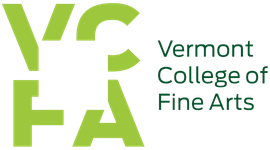
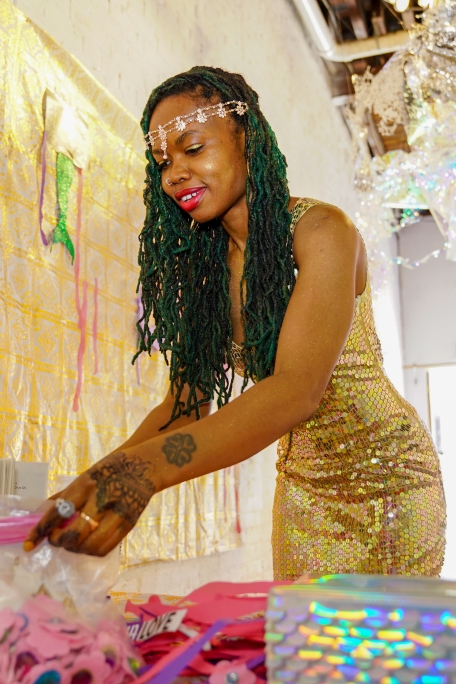
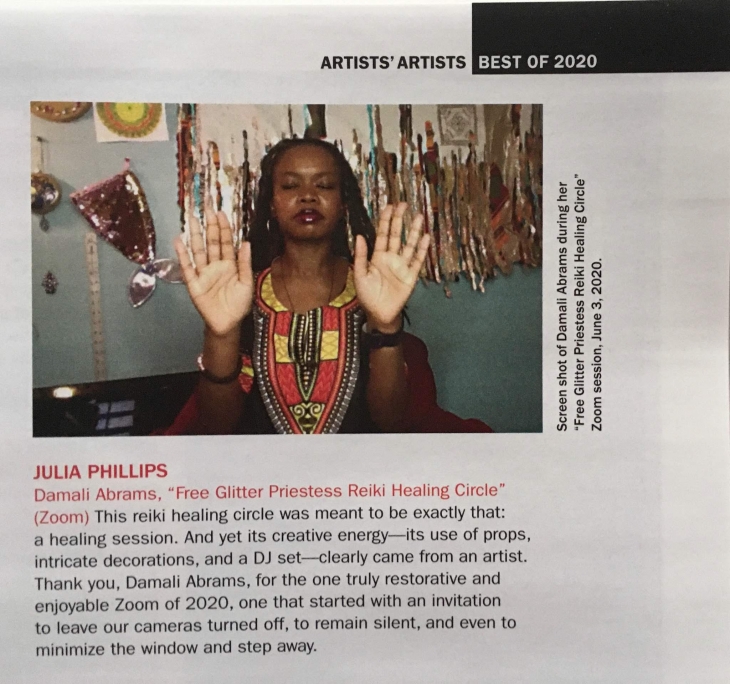
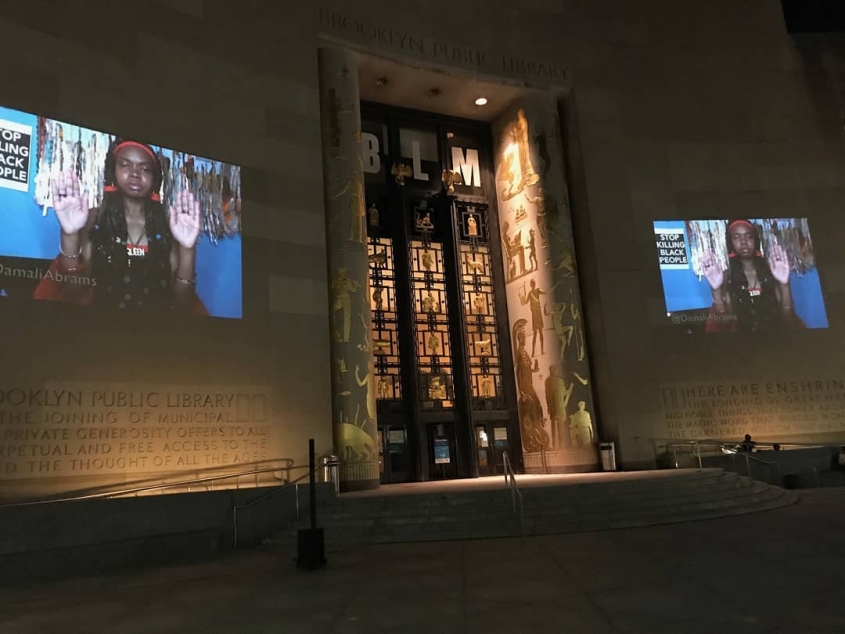
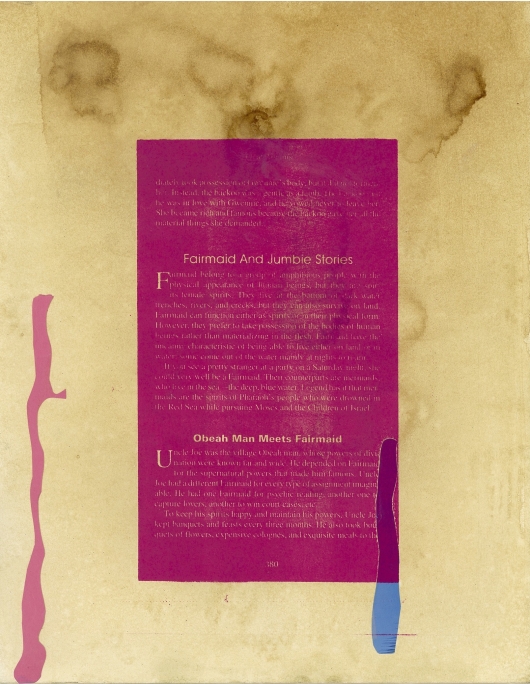
 Student Erin Snyder (S21) and Artist-Mentor Nils Karsten (W03)
Student Erin Snyder (S21) and Artist-Mentor Nils Karsten (W03) Alumnx: Renée Bouchard (W 21) North Bennington, VT, United States
Alumnx: Renée Bouchard (W 21) North Bennington, VT, United States